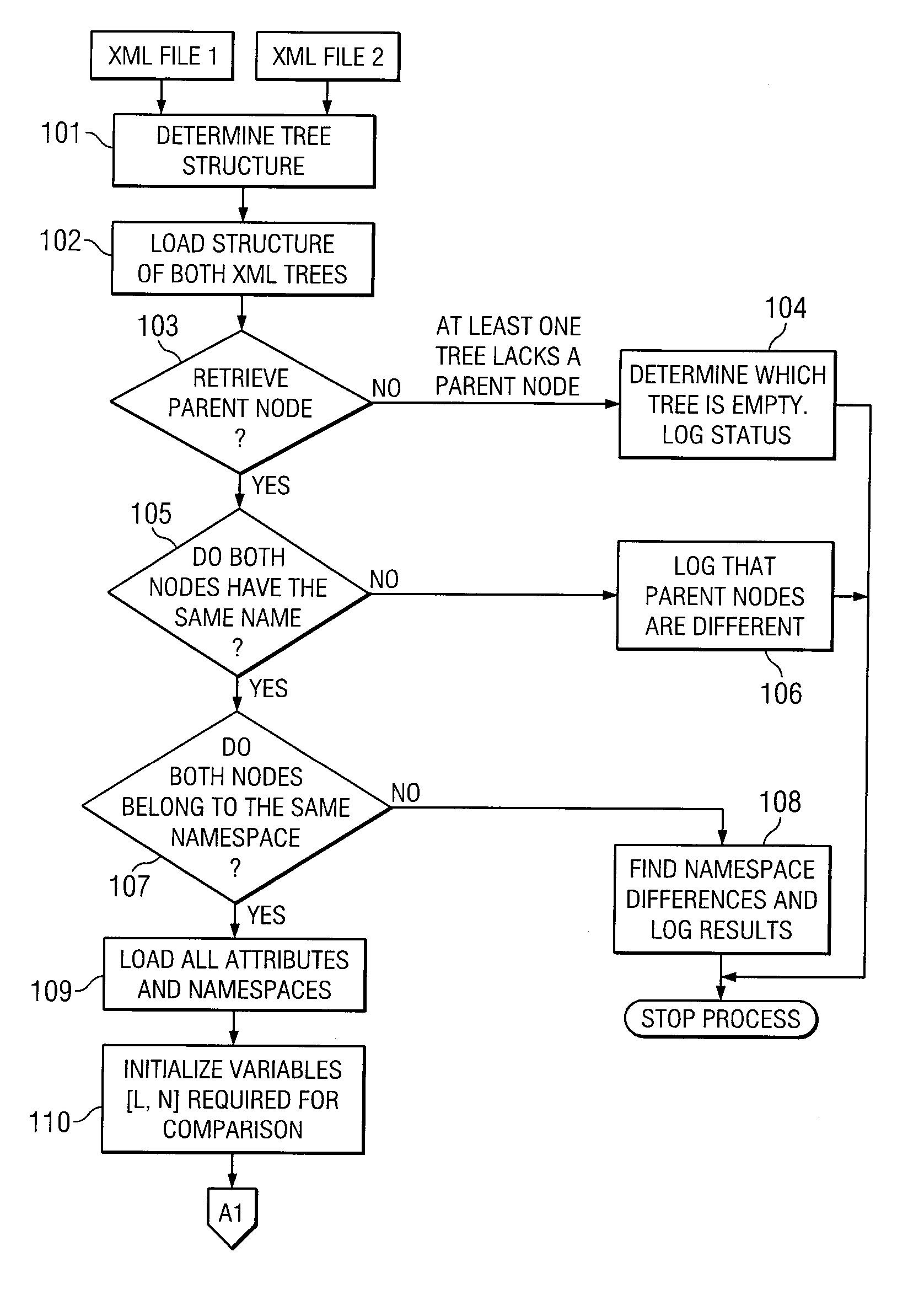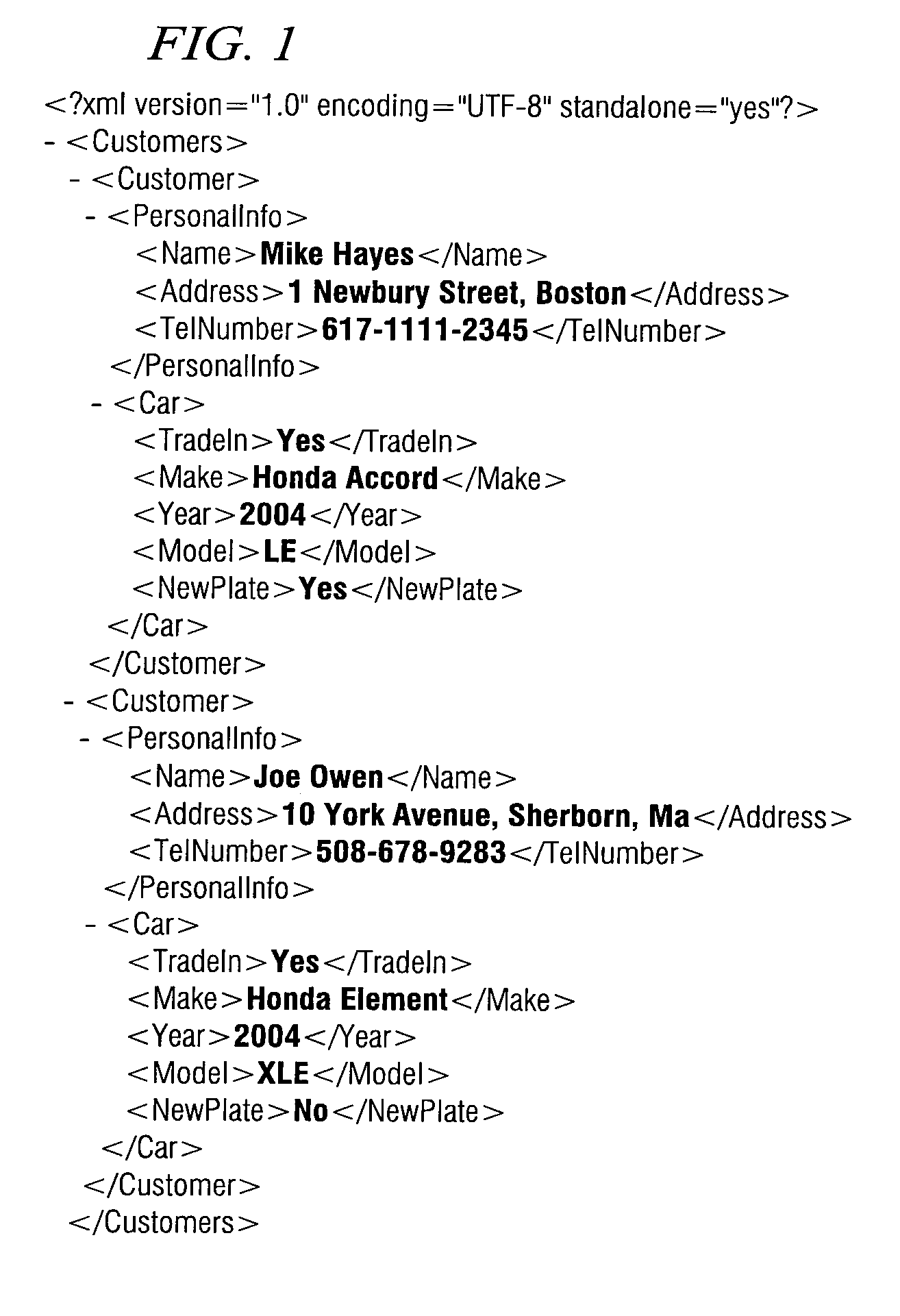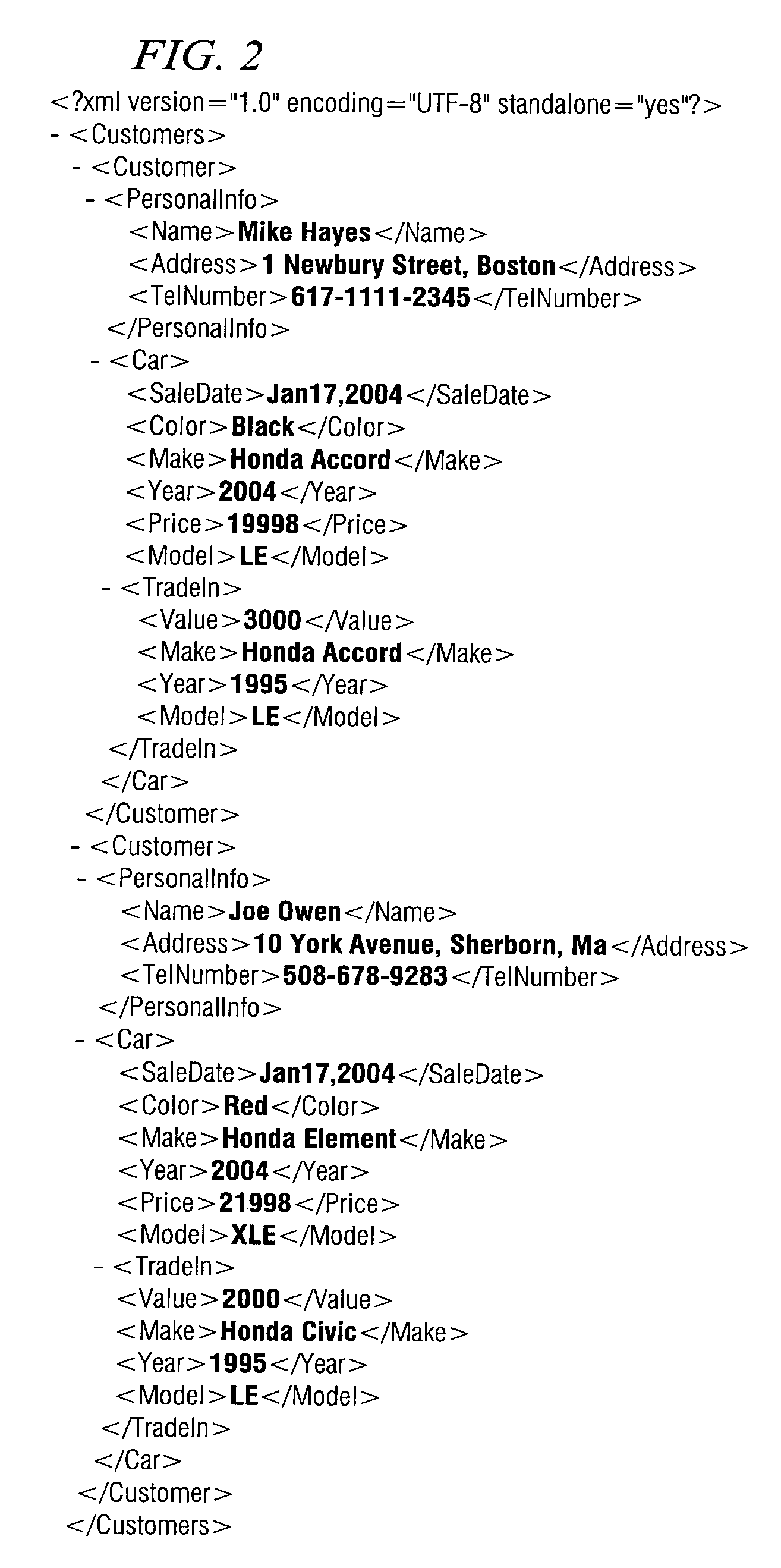Change control management of XML documents
a technology of change control and xml documents, applied in the field of data processing and computing systems, can solve problems such as not yielding any meaningful information
- Summary
- Abstract
- Description
- Claims
- Application Information
AI Technical Summary
Benefits of technology
Problems solved by technology
Method used
Image
Examples
example 1
[0024]
Warren Buffet
[0025] In the above example 1, the XML nodes Billionaires, Name, FirstName and LastName are elements. XML elements have relationships with other elements, these relationships create a hierarchical or tree-like structure.
[0026] 2. Attributes are used to provide additional information about elements. In example 1 above, State is an attribute with Value “Omaha”. Attributes cannot have children and they always belong to an element.
[0027] 3. Namespaces: XML Namespaces help distinguish between different elements and attributes by associating them with certain vocabularies identified as namespaces. An element in one namespace may have the same name but different attributes as an unrelated element in another namespace. By specifying one or more namespaces within an XML file, the two unrelated elements with the same name can coexist.
[0028] 4. CData flags or sections are used to block text or markup, which is otherwise prohibited in an XML file, thus providing a means...
example 2
[0030]
standalone=“yes” ?> Warren Buffet ... 308-308-0999 308-308-0929 308-308-0939 308-308-0949
[0031] In example 2, the element Phone is a repeating element. In the structural definition, as will be described below, instead of defining this node four times, Phone will be marked as repeating element.
[0032] 6. Repeating Record, by definition, is a record that repeats. Referring to FIG. 10, PurchaseOrder2.xml is an XML target file for all the orders processed by a company, where Comments is a repeating element while Product and Supplier are repeating records. Every Order element has a repeating element called Comments that contains customer comments about the delivery and their interaction with company. An Order element can contain multiple Product records. Since multiple suppliers can ship each product, the Product record may have multiple Supplier records. Repeating records can be nested; for example, an instance of the Product record can have many instances of the Supplier rec...
PUM
 Login to View More
Login to View More Abstract
Description
Claims
Application Information
 Login to View More
Login to View More - R&D
- Intellectual Property
- Life Sciences
- Materials
- Tech Scout
- Unparalleled Data Quality
- Higher Quality Content
- 60% Fewer Hallucinations
Browse by: Latest US Patents, China's latest patents, Technical Efficacy Thesaurus, Application Domain, Technology Topic, Popular Technical Reports.
© 2025 PatSnap. All rights reserved.Legal|Privacy policy|Modern Slavery Act Transparency Statement|Sitemap|About US| Contact US: help@patsnap.com



